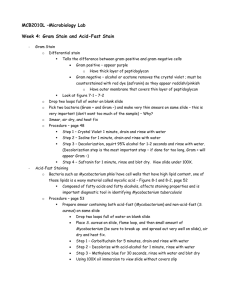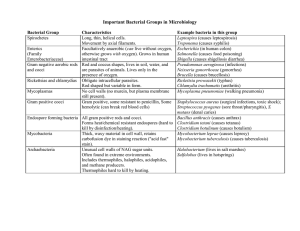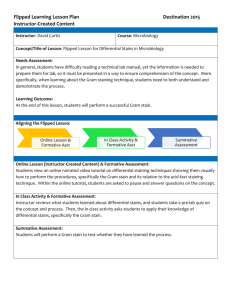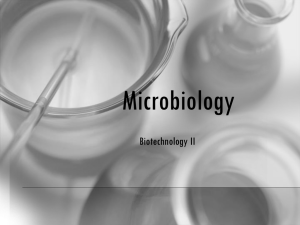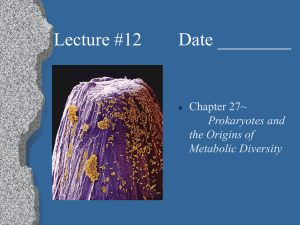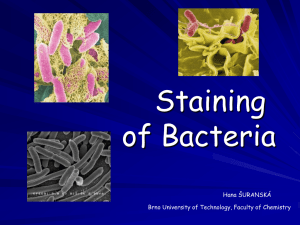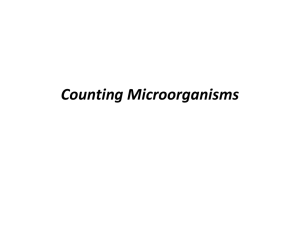MCB 2010L – IRSC Microbiology – Gram Staining and Acid
advertisement
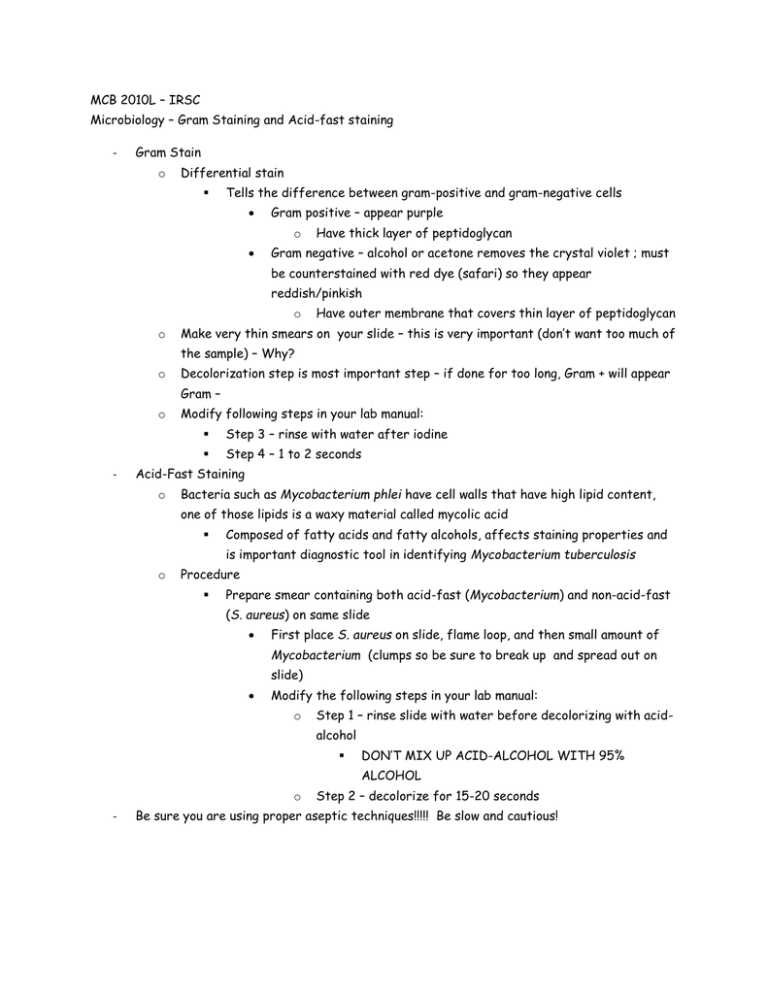
MCB 2010L – IRSC Microbiology – Gram Staining and Acid-fast staining - Gram Stain o Differential stain Tells the difference between gram-positive and gram-negative cells Gram positive – appear purple o Have thick layer of peptidoglycan Gram negative – alcohol or acetone removes the crystal violet ; must be counterstained with red dye (safari) so they appear reddish/pinkish o o Have outer membrane that covers thin layer of peptidoglycan Make very thin smears on your slide – this is very important (don’t want too much of the sample) – Why? o Decolorization step is most important step – if done for too long, Gram + will appear Gram – o - Modify following steps in your lab manual: Step 3 – rinse with water after iodine Step 4 – 1 to 2 seconds Acid-Fast Staining o Bacteria such as Mycobacterium phlei have cell walls that have high lipid content, one of those lipids is a waxy material called mycolic acid Composed of fatty acids and fatty alcohols, affects staining properties and is important diagnostic tool in identifying Mycobacterium tuberculosis o Procedure Prepare smear containing both acid-fast (Mycobacterium) and non-acid-fast (S. aureus) on same slide First place S. aureus on slide, flame loop, and then small amount of Mycobacterium (clumps so be sure to break up and spread out on slide) Modify the following steps in your lab manual: o Step 1 – rinse slide with water before decolorizing with acidalcohol DON’T MIX UP ACID-ALCOHOL WITH 95% ALCOHOL o - Step 2 – decolorize for 15-20 seconds Be sure you are using proper aseptic techniques!!!!! Be slow and cautious!
